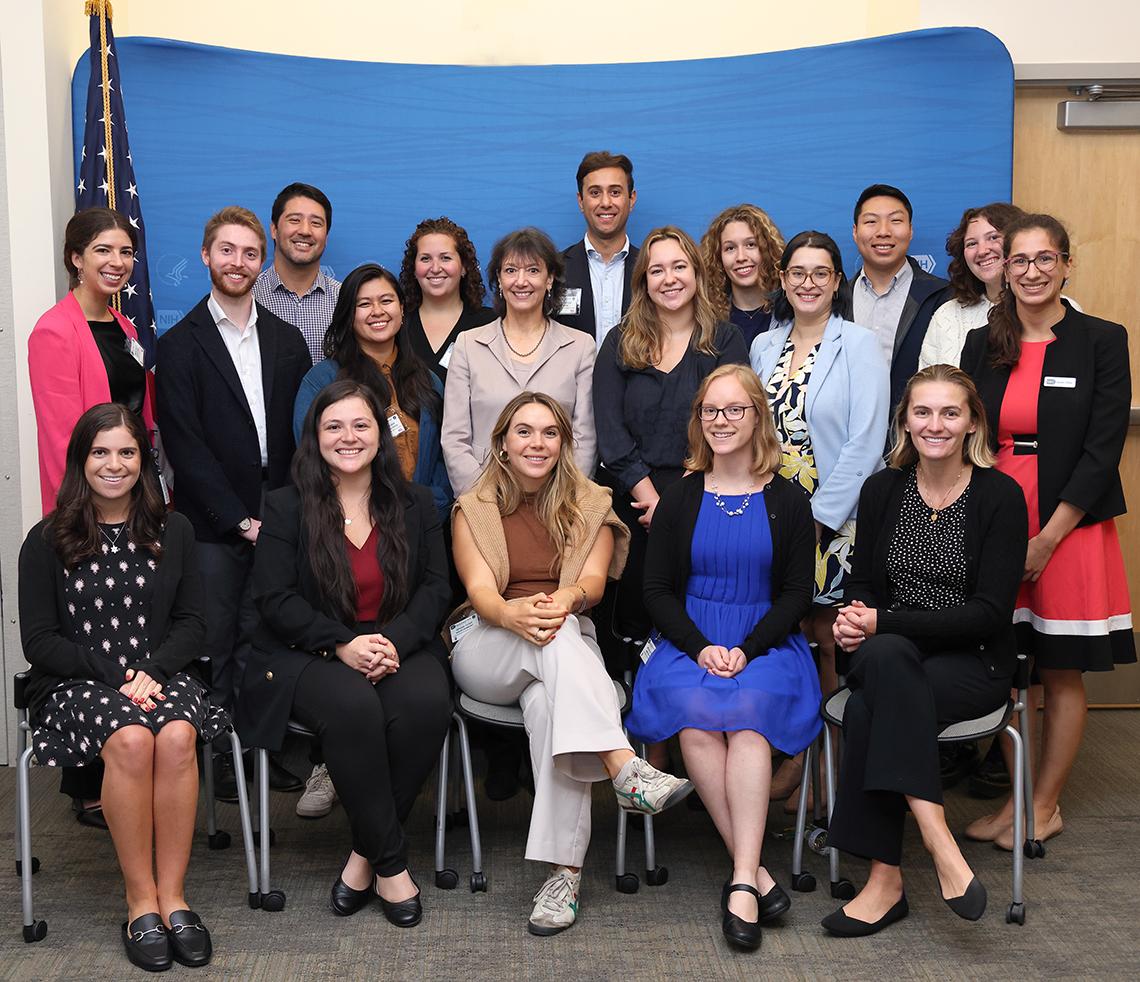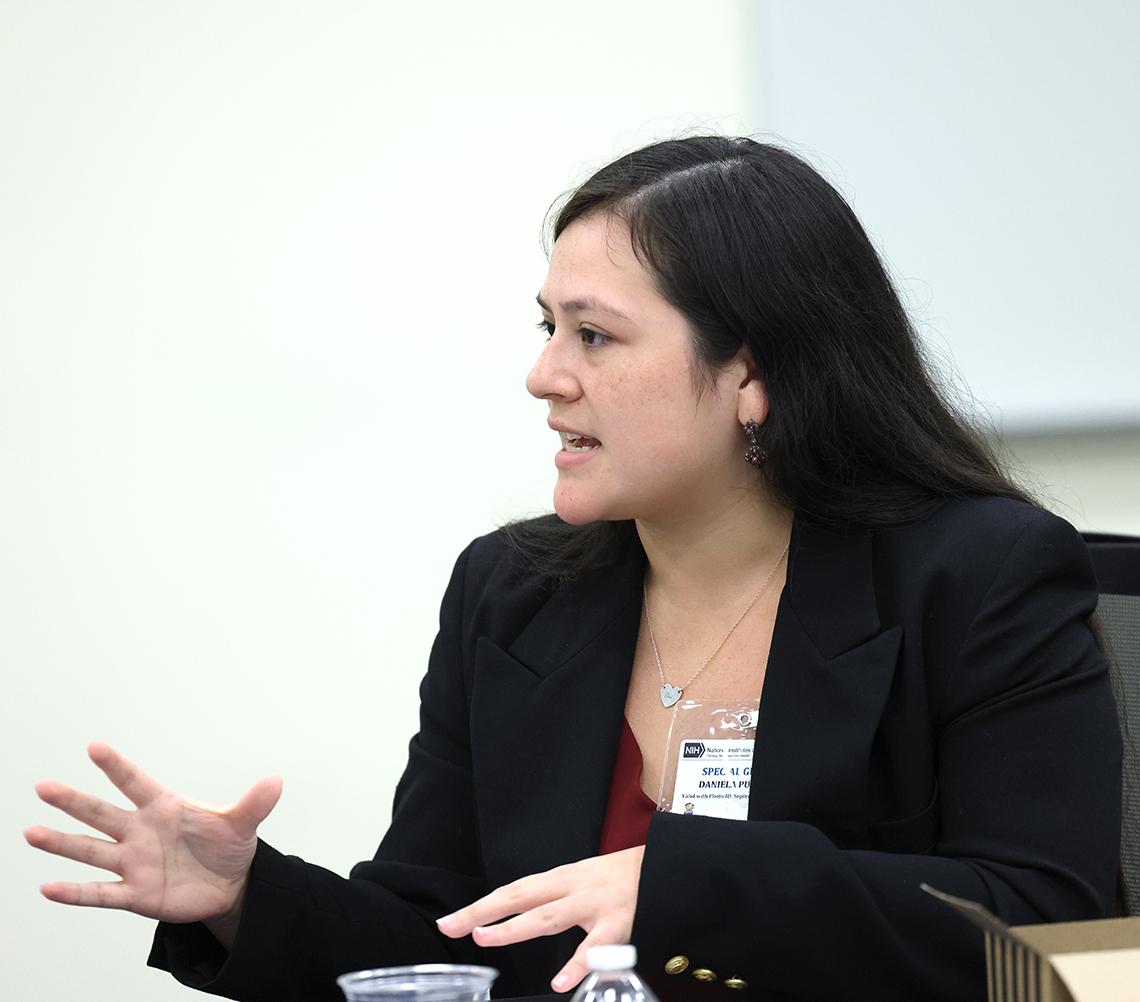Congressional Staff Tour Labs, Meet with Bertagnolli

Photo: Chia-Chi Charlie Chang

Photo: Chia-Chi Charlie Chang

Photo: Chia-Chi Charlie Chang

Photo: Chia-Chi Charlie Chang

Photo: Phyllis Ampofo/NIMH

Photo: Chia-Chi Charlie Chang

Photo: Chia-Chi Charlie Chang

Photo: Chia-Chi Charlie Chang

Photo: Chia-Chi Charlie Chang
A group of staffers from the House Democratic Caucus visited NIH in September to learn more about NIH research.
First, the Hill staffers toured three labs: one in the National Institute of Biomedical Imaging and Bioengineering (NIBIB) to learn about how biomaterials can restore damaged tissues, and two in the National Institute of Mental Health—one working on treatments for pediatric mood and anxiety disorders, and another studying a noninvasive therapy for treatment-resistant depression.
The delegation then joined NIH Director Dr. Monica Bertagnolli for a roundtable working lunch in a classroom in the Clinical Center. Each staffer shared their congressional office’s scientific interests and priorities—from biotech to neurology—and engaged in a robust dialogue on NIH’s research and current challenges.
Bertagnolli began the conversation by outlining her priorities. She discussed NIH’s Covid-19 response to help illustrate how long-term investments in research pay off and the importance of inclusion. Decades of NIH research into mRNA vaccines enabled effective Covid-19 vaccines to get produced in record time, she noted. She also alluded to progress in NIH’s RECOVER initiative that studies Long Covid.
“This illustrates brilliantly how some diseases happen differently in every different person,” she said. RECOVER is showing that some populations are disproportionately affected, such as pregnant women, who have a higher risk of long-term symptoms after recovering from acute Covid-19 infection.
“It shines a spotlight on what NIH is all about. We fund science to understand biology so we can spur into action and make this research relevant to people.”
And the fact that people respond differently to treatments highlights the importance of inclusion.
“We have to make sure research involves everybody,” Bertagnolli said. “Our goal in scientific discovery is to improve care and delivery. We have to own the process, from finding the nature of disease to helping everyone.”
Toward that objective, NIH institutes and centers (ICs) work collaboratively on projects big and small. Bertagnolli described such larger NIH efforts as the All of Us Research Program and UNITE. She also described CARE for Health™, a project NIH is piloting to assess and address health needs in rural, tribal and other communities where people have been left out.
Data has been another hot topic. “We’re on a tear with AI [artificial intelligence] to have inclusive, diverse data,” she said.
Another area she emphasized is rare disease research. By studying how to bolster the immune system to fight infection, this not only helps fight rare diseases but also many other conditions, from cancer to diabetes to dementia.
“We can always do better,” and we can do a lot more to benefit everybody, Bertagnolli said. Sustained funding is critical for so many reasons, including to retain the best researchers.
“We’re hitting the tip of the iceberg” in so many research areas, she added. It’s an exciting time as we watch discoveries unfold. “Science transforms the world.”
